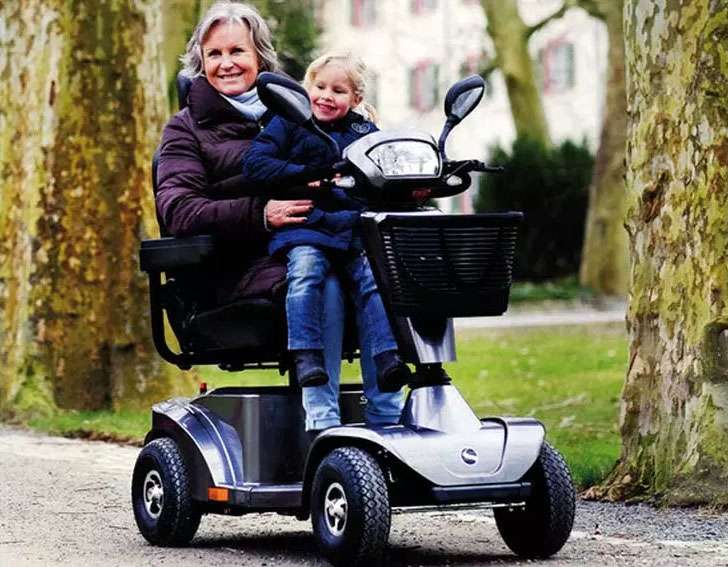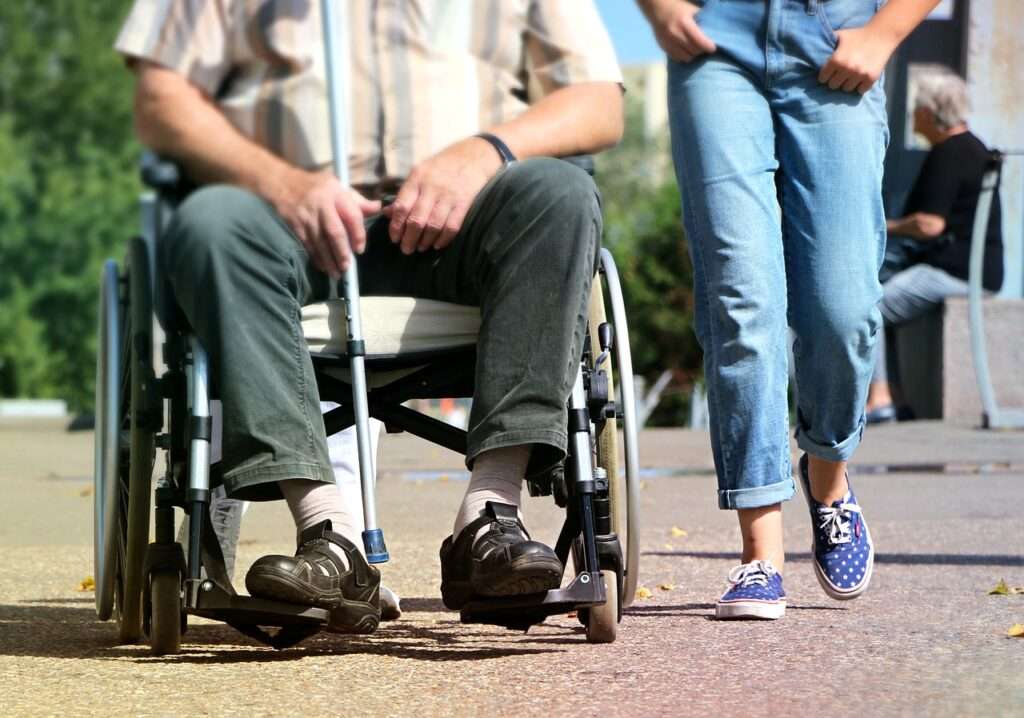Jump straight to…
We’re pretty clued up on everything to do with mobility scooters, but recently we’ve had to refresh our knowledge on the rules for mobility scooters on the road. As you may be aware, class 3 scooters can be driven on the road.
We often supply class 3 scooters to our clients, but of course it’s important that they’re aware of the Highway Code or their own safety and the safety of others. So we’ve put together this little guide to keep everyone up to speed on the Highway Code for mobility scooters.
What are class 3 scooters?
Class 3 is the highest tier of mobility scooter, and that’s because they’re the most powerful. They are noticeably larger, and can travel a bit faster than lightweight models.
Class 3 scooters are road-worthy and often have a top speed of about 8mph (12kph). However, the speed can be lowered to 4mph (6kph) for pavement use.
Class 3 models should not weigh over 150kg (not including the driver), and they can only be used by disabled individuals aged 14 or over.
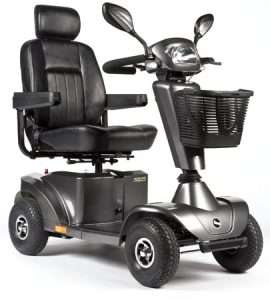
Class 3 scooters (like the S425) tend to be bigger and better equipped for road use.
Do I need a license for a class 3 scooter?
Simply put — no, you don’t need a license for a class 3 scooter. This is because mobility scooters are not classed as a motor vehicle, and therefore you don’t need to pass a test to drive one either.
Nevertheless, if you want to use your class 3 scooter on the road it must be registered with the Driver and Vehicle Licensing Agency (DVLA). You won’t need to pay any road tax for your scooter.
To register and license a new class 3 mobility scooter, you must fill out form V55/4.
To register and license a used class 3 mobility scooter, you must fill out form V55/5.
Do I need insurance?
You are not required by law to have insurance for your mobility scooter, but we would recommend getting it insured anyway. Ideally, insurance for fire, theft, and damage is best.
We now offer insurance when you buy a mobility scooter from us, so make sure to ask us for more details!
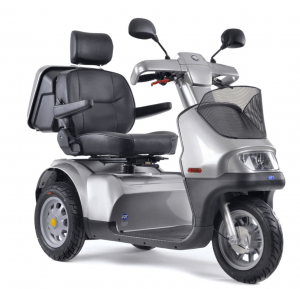
The Breeze mobility scooter is also a roadworthy model. We always recommend taking out insurance on your scooter just for peace of mind.
General rules before setting off
- Do not use mobility scooters on the road if you have been drinking alcohol or taking drugs. Make sure to check any over the counter medication to see if makes you drowsy. If so, then do not drive your scooter whilst taking the medication.
- Make yourself as visible as possible by wearing fluorescent clothing or materials that will make sure that other drivers can see you on the road. All class 3 scooters should be equipped with a headlamp, rear lights, and indicators, so make sure you use them.
- Do not carry anyone else on your scooter with you. This can be particularly distracting whilst driving, and it may even damage your scooter. Similarly, you should not carry a pet whilst on your scooter, regardless of how well-trained they are.
When you’re on the move
- Wherever possible, crossroads where there is a dropped kerb. Be careful when mounting and dismounting kerbs, and approach bigger climbs are drops at a right angle so that both front wheels will go up or down at the same time.
- Be very careful when approaching corners at speed as your scooter could topple over. Likewise, be careful on slippery surfaces or downhill slopes. Make sure to take care when visibility is reduced or restricted by fog or physical obstacles.
- Give yourself plenty of time to brake; 8mph may not seem like a particularly high speed but it still takes some distance to stop!
- Be mindful of pedestrians who may not see or hear you coming — particularly from behind.

Road-worthy mobility scooters will be fitted with headlights and rear lights, and well as indicators that will allow other motorists to be aware of your presence.
When using mobility scooters on the road
- Mobility scooters on the road must be able to travel at 8mph (12kph) and be equipped with headlights, rear lights, flashing indicators and a horn.
- Try to avoid busy roads where possible as scooters or much smaller and slower than normal cars. The DVLA do not recommend that you use dual carriageways, but this is allowed if you have a scooter that is fitted with extra flashing amber hazard lights. Mobility scooters are not allowed on motorways.
- When on the road, you must abide by the same rules as other traffic. Keep to the left of the road to allow cars to go past you when allowed.
- Scooter users must obey traffic lights and any other road signals and instructions (e.g.- stop signs, give-way signs, and one-way street signs).
- Give way to pedestrians on pedestrian crossings.
- Always use your headlights and rear lights on when it is dark, and always indicate when turning left or right. To turn right, it may be safer to use a pedestrian crossing. If there is no pavement or crossing, you are advised to stop on the left and wait until there is a good-sized gap in traffic to cross. Give yourself plenty of time when manoeuvring, as cars will most certainly be travelling faster than you are.
- You are not permitted to travel in bus lanes or cycle tracks.
- Keep an eye out for opening doors when passing parked cars, and don’t rely on your mirrors as they may give you a false impression of distance.
- Don’t park your scooter in a location where it might obstruct others on the pavement or footpath.
- If your scooter breaks down or you cannot move for whatever reasons, use your hazard warning lights to alert other motorists.
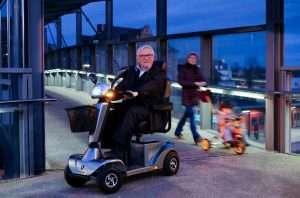
If you’re driving your mobility scooter on the road for the first time, you should always refresh your knowledge on the rules.
These are the general rules for mobility scooters on the road. Although there is no driving test, insurance, or license required to drive one, it’s still incredibly important to follow the Highway Code and obey instructions when travelling. For any further information or advice, you can access the full Highway Code document here.





